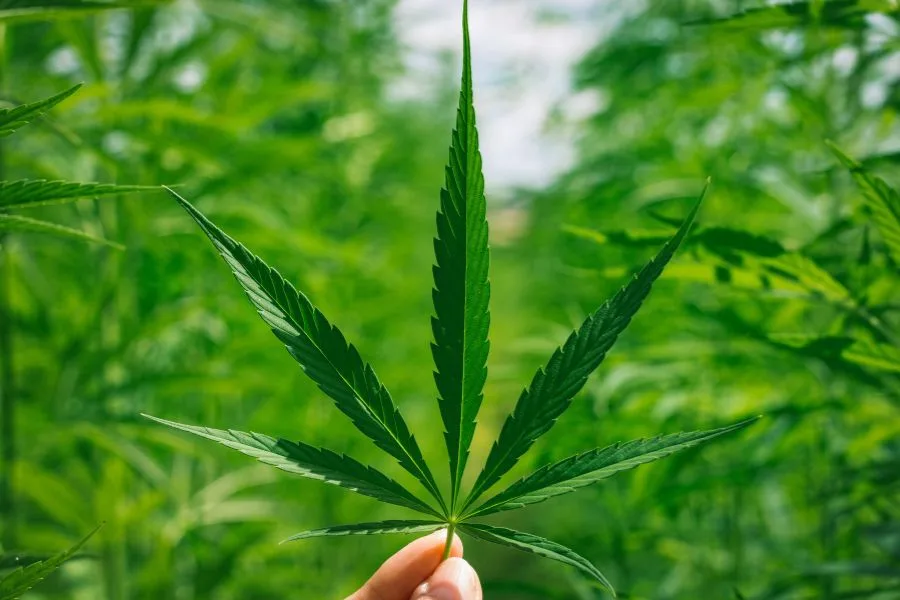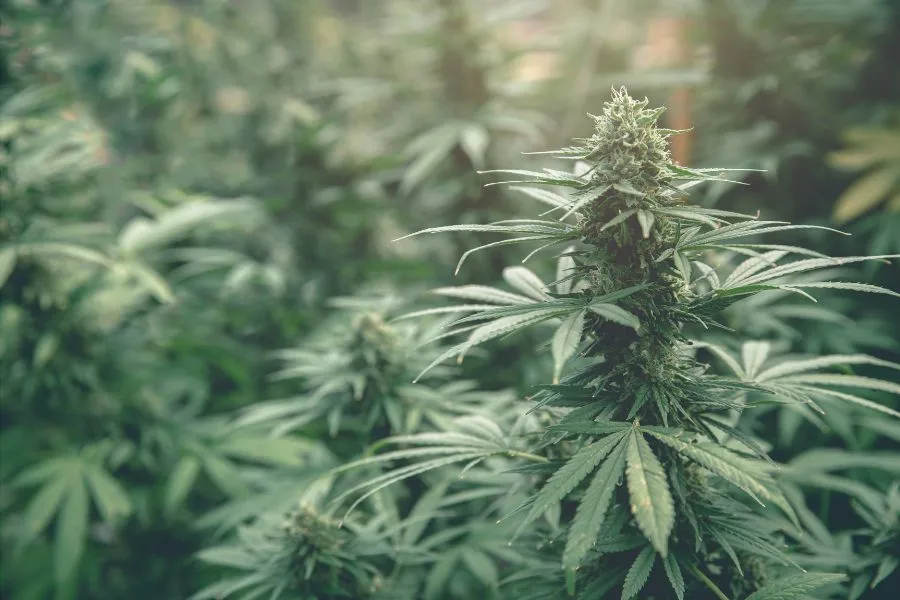Key Takeaways
- Cloning ensures genetic consistency and accelerates growth, allowing for multiple cultivation cycles and a stable output of your favorite strains.
- Engaging in the cloning process enhances gardening skills and deepens understanding of plant life cycles, making it a rewarding technique for growers of all levels.
- By mastering cloning, growers can maintain precise control over the cultivation environment, optimizing growth conditions and reducing the risk of crop failure.
Cannabis cloning is a sophisticated yet accessible technique that lets growers replicate their most successful plants, ensuring consistent quality and traits.
Unlike the uncertainties of seeds, cloning provides a controlled and predictable cultivation path, making each marijuana clone a genetic copy of the mother plant. This method skips the germination phase, saving time and ensuring all clones are female, avoiding unproductive male plants.
Cloning can benefit beginners and seasoned cultivators, but mastering the right steps and conditions is essential. This method allows growers to preserve preferred strain lineages, improve growing cycles, and enhance yield.
As we explore cannabis cloning, a meticulous and informed approach will ensure each cloning effort is effective and rewarding.
Preparing to Clone Cannabis
Selecting a Mother Plant

Preparing to clone cannabis plants begins with the critical step of selecting a mother plant—a decision that sets the stage for the success of your clones. Choosing a healthy mother plant involves identifying one that is robust, disease-free, and showing vigorous growth.
Opting for a plant in its mature vegetative state, characterized by well-defined and alternating nodes, is essential. This maturity and node arrangement ensures that the plant has ample energy and resources to recover from cloning and support the growth of strong, viable cuttings.
By meticulously selecting the right mother cannabis plant, growers can significantly influence the health and productivity of their future harvests, establishing a foundation of quality and consistency in their cannabis cultivation.
Tools and Materials Needed
Gathering the right tools and materials is an essential preparatory step in the cloning process. This ensures that each phase, from cutting to rooting, is optimized for success.
- Pruning Shears: Sharp and sterile for precise cuts.
- Rooting Hormone: Promotes quicker root development.
- Labels and Markers: For identifying strains and dates on clones.
Recommended Growing Mediums:
- Rockwool Cubes: Popular for their stability and aeration properties.
- Peat Pellets: Biodegradable and retain moisture effectively.
- Aeroponic Cloners: For a soil-less cloning approach, ensuring maximum oxygen exposure to roots.
The Cloning Process: 7 Easy Steps

Step 1: Taking Cuttings
The first step in cloning involves selecting and cutting branches from the cannabis mother plants and identifying vigorous branches that are healthy and free of any signs of disease or stress. Look for branches with many nodes, as these will develop into roots more readily.
When making cuts, use sterilized pruning shears to slice the branch at a 45-degree angle just below a node. This angled cut increases the surface area for root growth and helps the cutting absorb more water and rooting hormone.
Step 2: Preparing the Cuttings
Once the cuttings are taken, it’s important to prepare them properly to encourage successful rooting. Start by carefully removing the lower leaves near the cut end, leaving enough foliage on top to enable photosynthesis without overtaxing the cutting’s initial energy reserves.
After trimming, dip the cut end into a rooting hormone. This step is crucial, as rooting hormones help stimulate root growth and protect the cut from fungi and bacteria, greatly increasing the chances of a successful clone.
Step 3: Planting the Cuttings
Planting the cuttings correctly is vital for their development into healthy plants. Choose a growing medium that suits your setup and preferences; rock wool cubes and peat pellets are popular for their ease of use and effectiveness.
Pre-moisten the medium before inserting the cuttings to ensure a moist environment that encourages root growth. When inserting the cutting into the medium, do so gently but firmly, ensuring that the treated end is well covered but not compressed, which can hinder root expansion.
Step 4: Creating an Ideal Environment
Creating and maintaining an optimal environment is essential for the newly planted cuttings to root and thrive. Keep the temperature consistent, ideally between 70-75°F, and maintain high humidity, around 70-80%, by using a humidity dome or misting the cuttings regularly.
Provide 18-24 hours of light using fluorescent or LED lights, which offer the right intensity without emitting too much heat that could damage the delicate cuttings. Proper environmental control not only accelerates rooting but also improves the overall health and vigor of the clones.
Step 5: Monitoring and Managing Cannabis Clone Health
Regular monitoring of your clones is essential to catch any signs of distress early. Check daily for disease symptoms, nutrient deficiencies, or pest infestations.
Keeping a close eye helps you make necessary adjustments quickly, such as altering humidity levels, adjusting light intensity, or applying mild organic pesticides. This vigilant oversight ensures your clones grow in the healthiest possible conditions.
Step 6: Hardening Off Clones
As roots establish and the clones begin to grow, they will need to gradually become accustomed to less controlled environments, especially if they will be moved outdoors or to a less regulated indoor space.
Begin by incrementally reducing humidity to decrease their dependency on the high-humidity environment and slowly increasing light intensity to match their future growing conditions.
This process, known as hardening off, is crucial for reducing shock when the plants are transplanted, which promotes a smoother transition and better growth in the subsequent phases.
Step 7: Transplanting Rooted Clones
Once your clones have developed a robust root system, typically visible through the bottom of their growing cubes or when the root mass holds the medium together firmly, they are ready to be transplanted.
Carefully move each clone to a larger pot or final growing medium, ensuring minimal disturbance to the roots.
To encourage continued growth, use nutrient-rich soil or a soilless mix suitable for cannabis. After transplanting, water the plants gently but thoroughly to help settle the roots into their new environment.
Advanced Tips and Common Pitfalls

Enhancing Cloning Success
Advanced cloning techniques can significantly improve the reliability and efficiency of your cloning process. Among these, aeroponic cloning stands out as a highly effective method. Aeroponic systems suspend cuttings in the air while misting the roots with a nutrient-rich solution.
This exposure maximizes oxygen intake and promotes rapid root development without the risk of overwatering, a common issue in other mediums. Adopting aeroponic cloning speeds up the rooting process, resulting in stronger, more resilient plants.
The Role of Sanitation in Preventing Contamination
Maintaining stringent sanitation practices is paramount in any cloning operation to prevent contamination and disease. Every tool used, from pruning shears to planting containers, should be thoroughly sterilized before and after each use.
Additionally, the environment where cloning takes place must be kept impeccably clean. Regular cleaning and disinfecting of surfaces, clean gloves, and minimal direct contact with the clones can drastically reduce the risk of introducing pathogens.
Ignoring sanitation protocols can lead to widespread issues, such as mold and fungal infections, compromising an entire batch of clones. By prioritizing cleanliness, you safeguard the health of your clones and ensure consistent success in your cloning endeavors.
Common Mistakes to Avoid
Avoiding common mistakes during the cloning process is essential to ensure your clones’ high survival and robust health. Below are some of the most frequent errors made by cultivators, along with expert tips to enhance the success rate of your cloning efforts.
- Using Dull or Dirty Cutting Tools: Always use sharp, sterilized tools to make clean cuts. Dull or contaminated tools can damage the plant tissue and introduce diseases.
- Cutting Incorrectly: Ensure cuttings are taken at a 45-degree angle to maximize the area available for root growth. Incorrect angles can limit this potential.
- Overhandling the Cuttings: Minimize handling to prevent stress and damage. The more a cutting is handled, the higher the risk of physical damage and contamination.
- Inadequate Humidity Levels: Maintaining high humidity is crucial, especially in the initial stages. Too low humidity can cause the cuttings to dry out and die.
- Neglecting Sanitation Protocols: Regularly disinfect all equipment and work areas to prevent fungal and bacterial infections.
Tips for Ensuring High Survival Rates of Clones
- Pre-use Equipment Check: Always inspect and sterilize your equipment before starting the cloning process.
- Optimal Cutting Selection: Choose only healthy and vigorous shoots from the mother plant for cloning.
- Proper Use of Rooting Hormones: Apply the correct concentration of rooting hormone to encourage faster and stronger root development.
- Controlled Environment Setup: To support the clones’ growth, create a consistent environment with controlled light, temperature, and humidity.
- Regular Monitoring and Adjustments: Keep a close eye on your clones and adjust care practices as needed to promptly address any signs of stress or disease.
By avoiding these pitfalls and adhering to best practices, you significantly improve the likelihood of your clones thriving and maturing into productive cannabis plants.
Frequently Asked Questions
What Is the Best Stage of Growth to Select a Mother Plant for Cloning?
The ideal growth stage for selecting a mother plant for cloning is the late vegetative stage before it begins flowering (flowering stage). At this stage, the marijuana plant should exhibit vigorous growth, strong stems, and a healthy root system.
The plant should also display a dense arrangement of nodes, as these are the points where cuttings are most likely to succeed in developing roots.
How Long Does It Take for Cannabis Clones to Root?
Typically, marijuana clones take anywhere from 7 to 14 days to establish initial roots under optimal conditions. However, the exact time can vary depending on the temperature, humidity, light exposure, and the growing medium used.
Maintaining a controlled environment that supports high humidity and moderate temperatures can help accelerate root development.
Can You Clone a Clone?
Yes, you can clone a clone. This can be done repeatedly, allowing for the preservation and multiplication of a desired plant’s genetic line indefinitely.
However, it is important to monitor the health of each generation, as some growers believe that repeated cloning over many generations can potentially weaken the plant’s vigor or increase susceptibility to diseases.
What Are the Signs of a Successful Clone Transplant?
Signs of a successful clone transplant include new growth, such as fresh leaves and stem extension, which indicate that the clone has adapted to its new environment and is developing well in its root system.
Additionally, the clone should appear healthy, with vibrant green coloration and turgid (firm) leaves, showing no signs of wilting, yellowing, or drooping.
How Do I Manage Pests in Cannabis Clones Without Harming the Young Plants?
Managing pests in young cannabis clones without harming them involves using gentle, non-toxic methods. Introducing beneficial insects like ladybugs or lacewings can naturally control pest populations.
Alternatively, spraying the clones with a mild neem oil or an insecticidal soap can effectively target pests without damaging the delicate young plants. Always test any treatment on a small area first and ensure the environment is well-ventilated to prevent damage from buildup.
Conclusion
In conclusion, cloning cannabis plants involves careful steps, from selecting the right mother plant to ensuring optimal growth conditions.
By adhering to the process—preparing cuttings, planting them correctly, and maintaining ideal environmental conditions—you can replicate your best plants consistently and efficiently.
Cloning offers advantages over starting from seeds, such as genetic consistency, guaranteed feminization, and faster maturity. It eliminates the unpredictability of seed germination, allowing for more growth cycles within the same timeframe.
Cloning may initially seem challenging for beginners, but it is ultimately rewarding. Even novices can achieve professional-level success with patience and adherence to the provided guidelines. We encourage all aspiring growers to try this technique, as it optimizes cultivation efforts and ensures a stable supply of your preferred strains.

